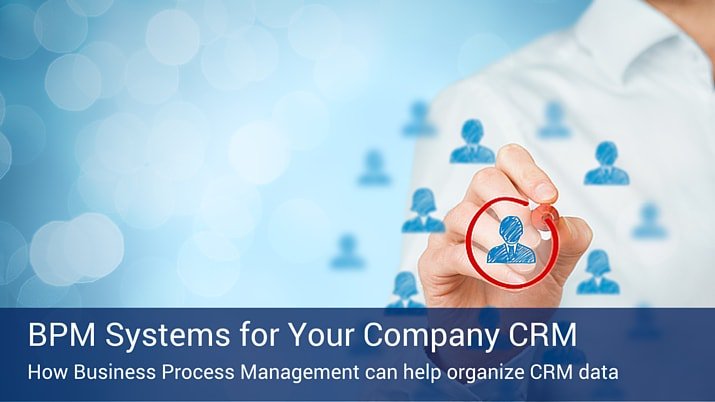Business Process Management Systems for Your Company CRM

Last Updated April 11, 2016
Customer Relationship Management (CRM) systems are fairly common these days. They can be useful tools for managing records, tracking sales and aggregating customer data. They are also important for businesses, who use them to maintain good relationships with their customers.
Business Process Management (BPM) is an opportunity to maximize the value of a CRM system and capitalize on efficiency. BPM excels at streamlining processes and workflows, finding opportunities for automation and cutting down on wasted effort. It promotes consistency throughout the customer experience, and when paired together, BPM can strengthen CRM systems and help businesses improve their relationships with customers.
BPM Benefits
CRM systems are good at managing and integrating customer data, but this informational output isn’t always actionable. What can businesses do with the data? What are the next steps in the process? BPM can help answer those questions and more.
By improving CRM with BPM, businesses are able to reframe the data into an actionable context. BPM analytics use the data and integrate it into traditional workflows and processes, so that organizations are able to act on these insights and improve their customer experience.
BPM affords better vision to organizations – BPM allows companies to track and measure Key Performance Indicators (KPIs) in order to identify business strengths and areas of opportunity. It also simplifies and regulates the customer experience.
For example, BPM can create a customer support process with which consumers can interact directly. This can feed customer data into an organization’s CRM system and help minimize minor problems that can occur when organizations try to act on incomplete data. By offering customers the opportunity to interact directly and easily with a support system, BPM is streamlining the customer experience and minimizing negative feedback from frustrated customers who may take to the Internet and social media.
BPM automates routine operations – BPM encourages processes to run autonomously and helps personalize the ways customers can interact with a business. These types of meaningful interactions can help each customer feel like a valued contributor to an organization, instead of a target gender, an age bracket or a credit card number. This type of treatment can help improve both customer loyalty and overall sales.
What’s more, integrating BPM with a CRM can help track profitability. Measuring profitability can provide near-immediate benefits and can bolster marketing efforts, upselling, budgeting, planning, execution and more. BPM provides it all through graphs, templates and dashboards.
Improving User Experience
CRMs are generally a great foundation for the customer experience, and BPM integration doesn’t change that. Think of BPM like the missing puzzle piece – one that can improve an organization’s sales, marketing coordination, responsiveness and upselling opportunities. It adds complexity and intricacy to the process. It provides flexibility and insight to the data that organizations are already collecting.
Integrating BPM helps align business performance to overall goals. It can inform an organization’s strategy, provide a clearer view of the customers, pinpoint profitable industry targets and improve the customer experience from beginning to end.
Using BPM to optimize a CRM is an important step to improving the ways a business interacts with its customers. It means refining an organization’s customer infrastructure. It means being proactive, streamlining workflows and taking action on data and numbers, all in the name of the customer experience.





